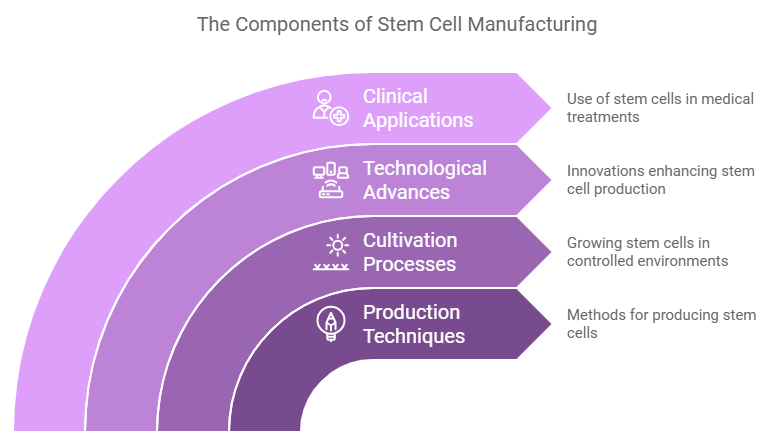The Stem Cell Manufacturing Market is at the forefront of revolutionizing healthcare and biotechnology, offering innovative solutions in cell therapy manufacturing, tissue engineering, and regenerative medicine. As the demand for advanced biopharmaceutical manufacturing processes increases, the industry is experiencing rapid growth, driven by both technological advancements and expanding therapeutic applications.
Market Drivers and Trends in Stem Cell Manufacturing
The stem cell production sector has been experiencing substantial growth, bolstered by increasing applications in cell-based therapies. The rise of regenerative medicine and stem cell therapy is a significant factor in this surge, as these therapies show promise in treating previously untreatable conditions such as genetic disorders, cancers, and neurological diseases. Additionally, the growing investment in stem cell research and biotechnology advancements continues to drive innovation, creating a favorable environment for stem cell expansion technologies.
Moreover, stem cell clinical trials are becoming more common, accelerating the approval process for new treatments and stimulating demand for scalable, efficient cell manufacturing processes. The integration of automation and digital tools in cell culturing and stem cell production has also led to improved outcomes, including higher yields and reduced costs. This, in turn, makes stem cell therapies more accessible to a broader patient population.
Download PDF Brochure: https://www.marketsandmarkets.com/pdfdownloadNew.asp?id=70743403

Technological Advancements in Stem Cell Manufacturing
Innovations in stem cell engineering are creating new opportunities for companies to offer better products, leading to an evolving biomanufacturing industry. The development of stem cell products such as cell-based therapeutics and organoids has transformed the market, allowing for the creation of highly personalized treatments. Furthermore, advances in bioprocessing technologies are improving the scalability and efficiency of stem cell production, a crucial factor in addressing the increasing demand for these therapies.
Another area of significant progress is cell-based therapies, which have become an integral part of the pharmaceutical and healthcare sectors. These therapies are particularly effective in oncology, immunology, and neurology, where traditional treatments have limited success. As stem cell research continues to evolve, the breadth of its potential applications expands, attracting both public and private sector investments.
Growth Opportunities in the Stem Cell Manufacturing Market
As the global population ages, the demand for regenerative medicine and stem cell-based therapies is expected to rise exponentially. Aging populations are more prone to degenerative diseases, injuries, and conditions that require personalized therapeutic solutions, making the stem cell manufacturing market an attractive sector for investment and innovation.
Emerging markets, particularly in Asia-Pacific, are also expected to contribute significantly to the market’s growth. Countries like China, India, and Japan are heavily investing in stem cell technologies and biomanufacturing infrastructure, which presents substantial growth opportunities for companies operating in this space.
The convergence of stem cell therapy, biotechnology, and regenerative medicine is creating a vast landscape for industry players to explore. By leveraging cutting-edge technology and scaling up production capabilities, companies can position themselves to meet the growing demand for stem cell-based therapeutics and related products.
Strategic Partnerships and Market Dynamics
Collaboration is key to success in the stem cell manufacturing ecosystem. Partnerships between biotechnology firms, academic institutions, and research organizations are essential for advancing stem cell research and bringing innovative therapies to market faster. These collaborations help reduce the financial and technical risks associated with cell-based therapeutics development, providing companies with access to expertise and resources that can accelerate product development.
Conclusion: A Transformative Future for Stem Cell Manufacturing
The future of the stem cell manufacturing market is both promising and dynamic. The ongoing advancements in cell manufacturing, stem cell therapy, and regenerative medicine are setting the stage for a new era of personalized medicine. As technology continues to evolve, the possibilities for biopharmaceutical manufacturing and cell-based therapies will expand, offering unprecedented opportunities for market players.
For businesses in the biotechnology and pharmaceutical sectors, now is the time to invest in stem cell production capabilities, cell-based therapies, and related technologies. By understanding market trends, leveraging strategic partnerships, and focusing on innovation, stakeholders can position themselves for long-term success in this rapidly growing market.